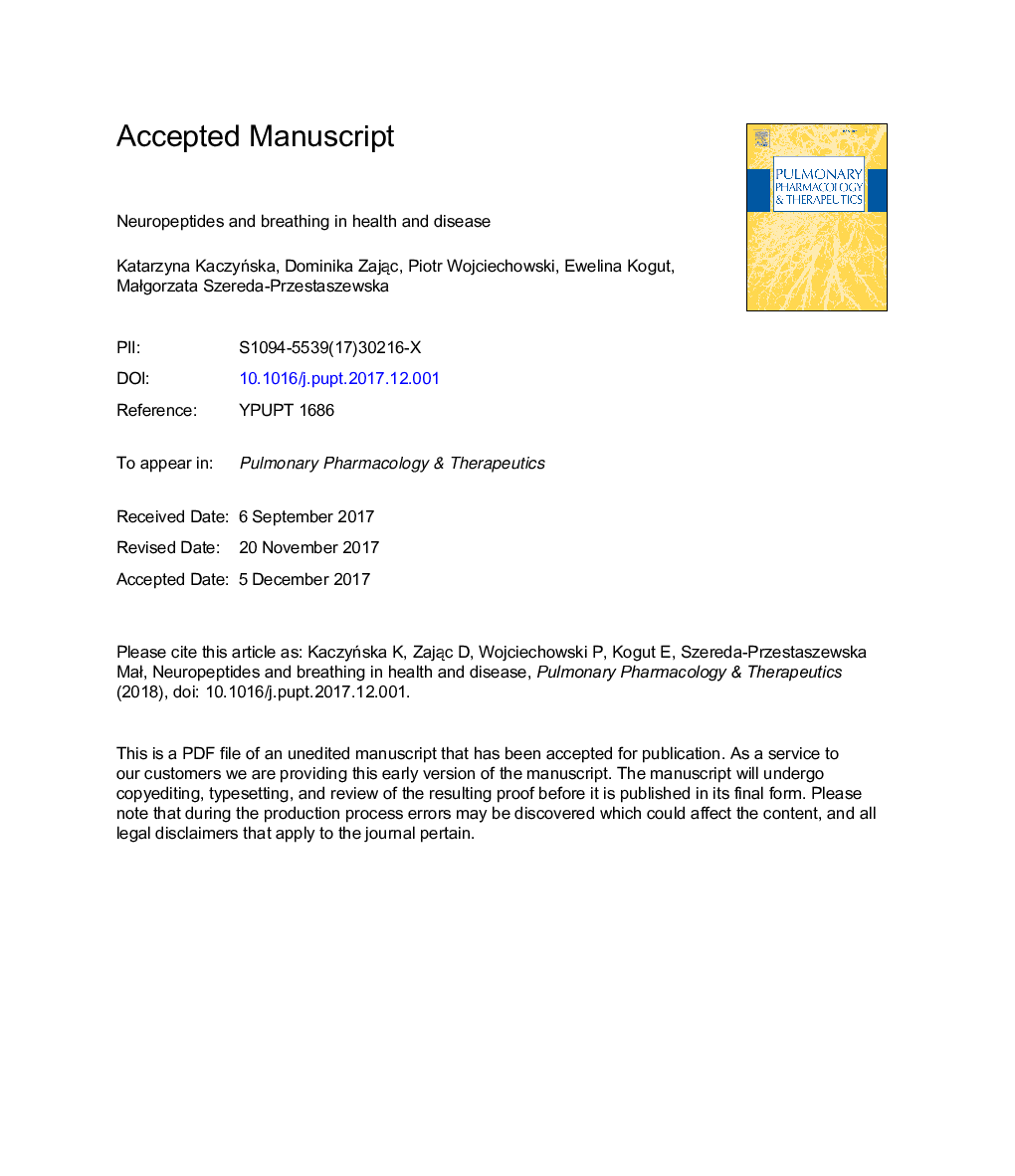| Article ID | Journal | Published Year | Pages | File Type |
|---|---|---|---|---|
| 8537763 | Pulmonary Pharmacology & Therapeutics | 2018 | 31 Pages |
Abstract
Regulatory neuropeptides control and regulate breathing in physiological and pathophysiological conditions. While they have been identified in the neurons of major respiratory areas, they can be active not only at the central level, but also at the periphery via chemoreceptors, vagal afferents, or locally within lungs and airways. Some neuropeptides, such as leptin or substance P, are respiratory stimulants; others, such as neurotensin, produce variable effects on respiration depending on the site of application. Some neuropeptides have been implicated in pathological states, such as obstructive sleep apnea or asthma. This article provides a concise review of the possible role and functions of several selected neuropeptides in the process of breathing in health and disease and in lung pathologies.
Related Topics
Health Sciences
Medicine and Dentistry
Pulmonary and Respiratory Medicine
Authors
Katarzyna KaczyÅska, Dominika ZajÄ
c, Piotr Wojciechowski, Ewelina Kogut, MaÅgorzata Szereda-Przestaszewska,
